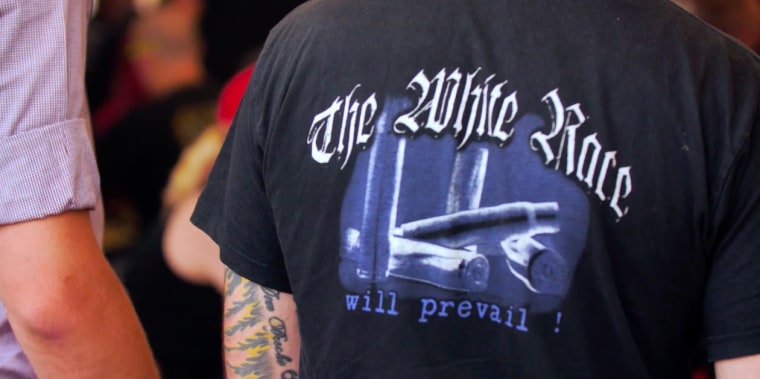THEMAR, Germany — As the deafeningly loud, rapid-fire music known as "hate rock" blasted out, hundreds of white nationalists, skinheads and neo-Nazis nodded their heads and swigged their drinks.
Among them was Keith, 46, a welder from Las Vegas, who for the second year in a row had traveled from Nevada to Germany to attend several far-right events.
"We must secure the existence of our people and a future for white children,'' Keith told NBC News in June.
However, he was not there just to enjoy the music. He said he was also hoping to share ideas and strategies with like-minded people — a small part of what Jonathan Greenblatt, CEO of the Anti-Defamation League, said was becoming an increasingly interconnected international movement with "clear links" between Europe and the U.S.
"You can't just sit at home and eat cheeseburgers anymore. It's time to mobilize," said Keith, who did not wish to have his last name published, for fear of reprisals back in the U.S.
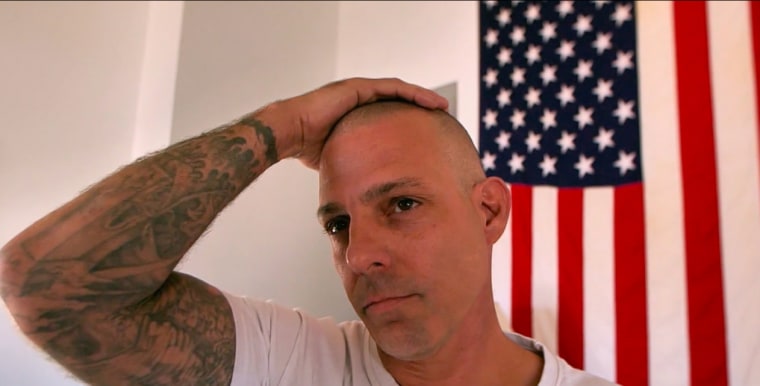
Events like the one in Themar, a small town in central Germany, are reluctantly tolerated and strictly controlled by the authorities. Both federal and local police could be seen monitoring the gathering, and riot squads with water cannons were braced for trouble nearby.
Keith changed his clothes before venturing to the event. At a privately run hotel before the event, he had been dressed from head to toe in clothing full of white power symbolism, and he wore a necklace showing Odin's wolves and Thor's hammer.
His big steel-capped boots, with 14 lace holes representing a popular white supremacist slogan, were scuffed from "brawling," he boasted.
He said he was prevented from wearing them outside because German police considered them a weapon.
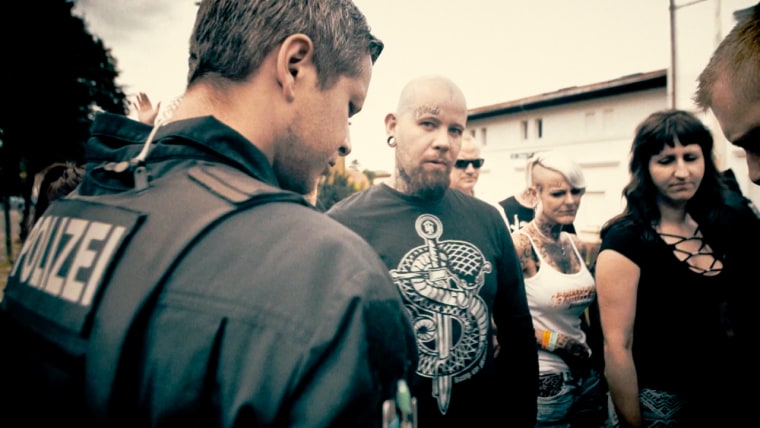
The country's laws also ban the display of Nazi imagery and any action that could be deemed an incitement of hatred. To avoid arrest, many attendees walked around with Band-Aids on to hide their swastika tattoos.
"You'll notice there's a whole lot of people with scratches or bruises around here,” Keith said, adding that while he had given Nazi salutes many times, he would not do so in Germany because he would likely be arrested.
Like other events of its type, it was held just outside the town, cordoned off to keep it separate from the local community. Keith and his fellow attendees then faced a gauntlet of searches and Breathalyzer tests from the authorities and jeering from a handful of anti-fascist protesters.
Separated by police and metal barriers, one of the demonstrators blew bubbles at them, while another taunted them with a beer can on a fishing rod.
As they have at many events of this type, police had banned the sale of alcohol, citing violence at similar events in the past. In March 2019, journalists and police officers were attacked at a far-right rock concert in Saxony.
Once inside the event in Themar, attendees, including a number of Americans like Keith, were greeted by Patrick Schroeder, who runs a weekly internet TV show espousing far-right views. He handed them free red baseball caps emblazoned with “MGHA,” shortform for “Make Germany Hate Again.” They mimick the "Make America Great Again" hats used to promote Donald Trump's 2016 presidential campaign.
"We make it look like the Donald Trump party when he was elected," said Schroeder, who has been dubbed a "nipster," or "Nazi-hipster," by the German media.
While the German government does not regularly publish the number of far-right events and concerts, the Interior Ministry has provided them when asked by members of Parliament. The last time they were made public, the figures showed that there had been 132 events of this type from January to September 2019.
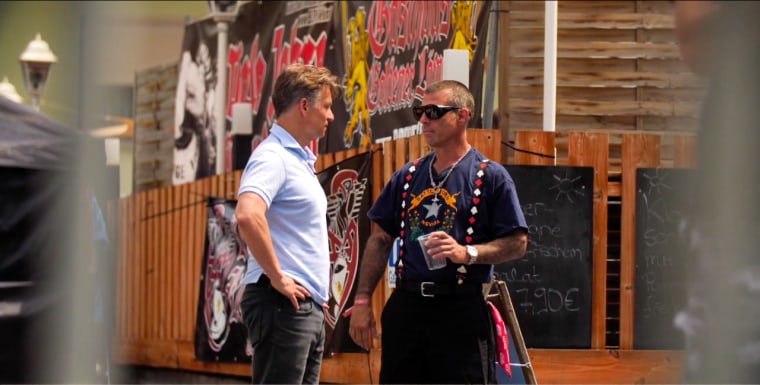
There was a "major increase" in the number of violent crimes linked to the far right in Germany in 2017, according to the latest report from the Interior Ministry. The rise in right-wing extremist offenses motivated by anti-Semitism during the reporting year was also "noticeable," it said, without providing figures.
In the U.S. meanwhile, the FBI recorded 7,036 hate crimes in 2018 — the latest figures available — of which 59.6 percent were racially motivated. That was a 17 percent spike in hate crimes overall, and there was a 37 percent increase in anti-Jewish incidents — the most common kind.
While it is unclear how many Americans attend events like the one in Themar, "there's a great deal of cross-pollination" between the far right in Europe and the U.S., said Greenblatt.
"There are clear links between white supremacists in the United States and their ideological fellow travelers in Europe," Greenblatt said in an interview, adding that the alt-right in the U.S. and Europe's far-right Identitarian movement were both young and sophisticated and used the internet and social media to spread their messages.
"Both these movements have a lot in common," he added. "They are anti-globalization, they are anti-democratic, they are anti-Semitic to the core, and they are highly opposed to multiculturalism and diversity of any sort."
European white supremacists were marching in 2017 at the "Unite the Right" rally in Charlottesville, Virginia, where counterdemonstrator Heather Heyer was killed when a car was deliberately driven into a crowd, he said.
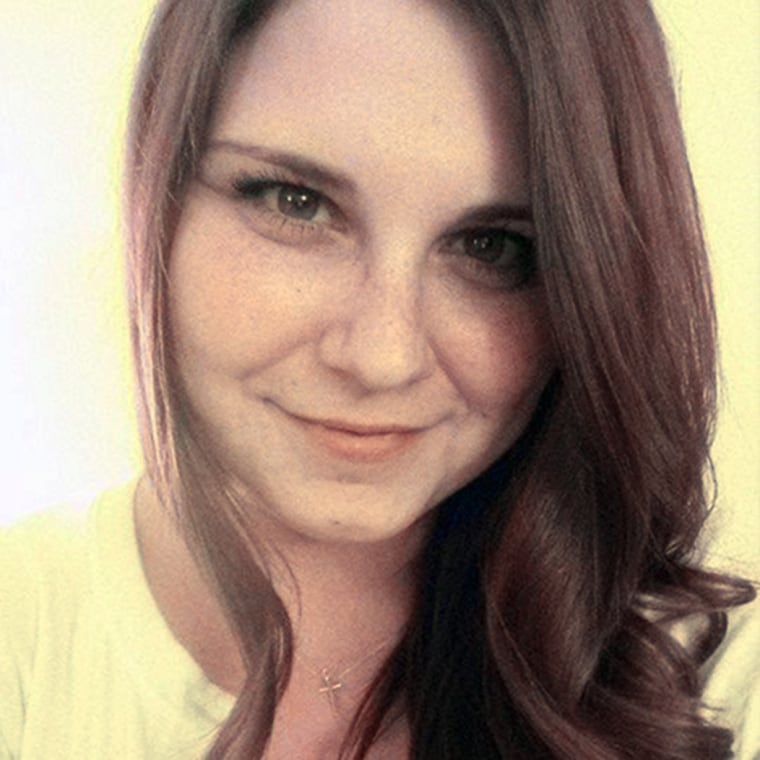
A few months later, American white supremacists marched at the Independence Day rally in Poland, he added.
Greenblatt said there was a "through line" between a series of atrocities linked to attackers inspired by far-right thinking, including Anders Breivik, now 40, who killed 77 people in Norway's worst terrorist attack in July 2011.
Breivik told a court that he wanted to promote his manifesto, a mixture of his thinking, far-right theories and other people's writing. This included sections from a manifesto produced by Theodore Kaczynski, the Unabomber, who over a number of years sent letter bombs to several universities and airlines, killing three people and wounding 23 others.
American white supremacist Dylann Roof, now 25, who killed nine people at a historic black church in Charleston, South Carolina, in a bid to promote a "race war" in June 2015, cited Breivik as an influence, as did white nationalist Alexandre Bissonnette, now 21, who shot six people dead at a mosque in Quebec City in 2017. Bissonnette also praised Roof.
After 11 people were gunned down at the Tree of Life synagogue in Pittsburgh in October 2018, the suspect, Robert Gregory Bowers, was found to have repeatedly threatened Jews in online forums. British lawmaker Jo Cox was killed in the street in 2016 by a man inspired by far-right beliefs.
In March 2019, a man walked into two mosques in Christchurch, New Zealand, killing 59 people as he livestreamed the attack on Facebook. He referred to Breivik, Roof and Bissonnette in his writings.
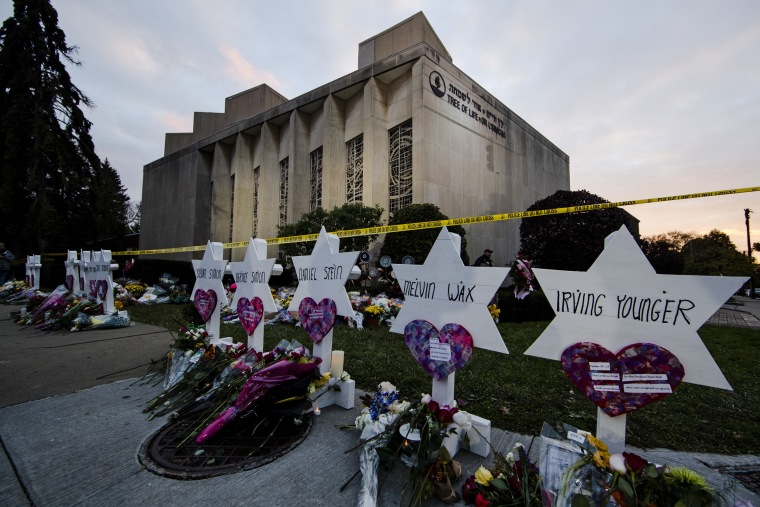
"We are no longer talking about one-off events, but a loosely coordinated chain of far-right attacks across the world, where members of these networks inspire — and challenge — each other to beat each other's body counts," said Peter Neumann, a professor of security studies at King's College London.
These killers want to "launch a race war," he said, adding: "The aim is to carry out attacks, claim responsibility, explain your actions and inspire others to follow."
Describing himself as "a white internationalist because I'm international at this point and I'm participating in political activities on more than one continent," Keith said he did not approve of violence.
But he said he thought the far-right attacks were a "direct result of the terrorist attacks that have happened against Christians and white people throughout the world."
Keith said he did not believe that Trump was a white nationalist, although he said the U.S. president was "definitely white" and "definitely a nationalist."
However, he added: "To put the two together is suggesting that he has some kind of desire to be associated with people like myself, and I don't believe he does."
Nevertheless, he said it is "great" having a national leader who "makes common-sense decisions in line" with his own beliefs.
Greenblatt said he found it "deeply disturbing" to see neo-Nazis "taking cues from our commander in chief."
Trump has been criticized on a number of occasions for his use of language and his failure to condemn racist behavior from his supporters.
After Heyer was killed, Trump declared that there were "very fine people on both sides,” although in a later White House briefing he said the “egregious display of “hatred, bigotry and violence” had “no place in America.

Similarly, as the president stood by, the crowd at a Trump rally last year in Greenville, North Carolina, chanted "send her back" about the Rep. Ilhan Omar, D-Minn., Rep. Alexandria Ocasio-Cortez, D-N.Y., Rep. Ayanna Pressley, D-Mass and Rep. Rashida Tlaib, D-Mich, collectively known as "the squad."
Trump later disavowed those chants, telling reporters: "i was not happy with it. I disagree with it."
Asked about whether white supremacists were taking their cues from Trump, a White House spokesperson told NBC News the the president had consistently and repeatedly rejected racism, racial discrimination, and anti-Semitism in all its forms.”
That should be a real cause for concern, Greenblatt said. “The racists feel like they have someone who is in their corner, and that is a total break from the role of the presidency."
